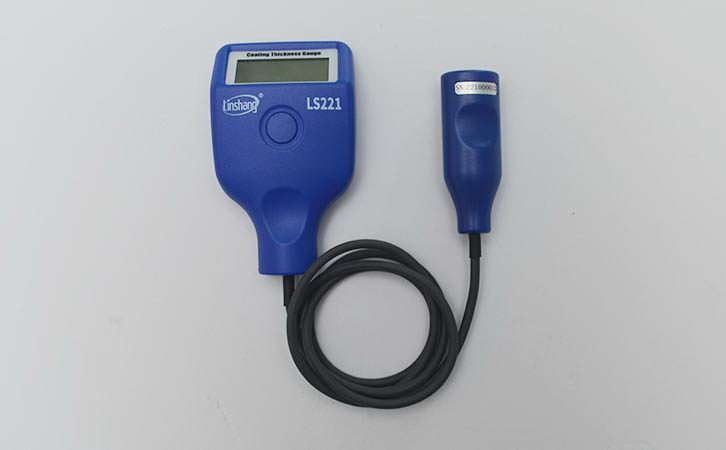Tips On Using Electronic Thickness Gauge
1. Important role of electronic thickness gauge
The electronic thickness gauge (paint thickness meter) can nondestructively measure the thickness of the non-magnetic coating on the magnetic metal substrate and the thickness of the non-conductive coating on the non-magnetic metal substrate. There are many types of electronic thickness gauges. Different types of electronic thickness gauges have different functions. Usually there are magnetic induction electronic thickness gauge , eddy current electronic thickness gauge and ultrasonic electronic thickness gauge. Electronic thickness gauges based on the principles of magnetic induction and eddy current can usually only measure the thickness of metal surface coatings, not non-metallic surface coatings such as wood, plastic, glass, concrete, etc. Ultrasonic electronic thickness gauges are just the opposite and can only measure coatings on non-metallic surfaces other than metallic surface coatings.
There are many kinds of problems encountered by users of electronic thickness gauges in the process of using the instrument. We summarizes some common methods and techniques of electronic thickness gauges based on common questions from everyone. The main considerations when you choose a electronic thickness gauge are the quality, feature, use and performance of the instrument itself. If you want to take advantage of these advantages in the process of use, you must not only ensure the quality when selecting the equipment, It is also necessary to ensure the accuracy of the method of use when using electronic thickness gauge.
2. Operation steps of electronic thickness gauge
When testing, pay attention to the basic metal magnetism and surface roughness of the standard film should be similar to the test piece.
When measuring, keep the probe perpendicular to the tested sample surface.
Pay attention to the critical thickness of the base metal when measuring. If it is greater than this thickness, it will not be affected by the thickness of the base metal.
When measuring, pay attention to the influence of the test piece curvature on the measurement. It is therefore unreliable when measuring on curved specimen surfaces.
Be careful not to measure at the inner corner and near the edge of the test piece when measuring, because the general electronic thickness gauge is sensitive to the sudden change of the test piece surface.
Keep the pressure constant during the measurement, otherwise it will affect the reading of the measurement.
When testing, pay attention to the direct contact between the instrument's probe and the part being tested, so the probe should be clean during measurement.
The above are the precautions and tips for using the electronic thickness gauge. We hope the above introduction can help you when you encounter problems using the electronic thickness gauge.
- High precision coating thickness gauge for used car
- Automotive paint protection films coating thickness gauge
- Plating Thickness Measuring Instrument for Detecting Anti-corrosion Coating
- Linshang LS220, LS191, LS160A– Necessary for Car Cover Inspection
- Coating Thickness Gauge for Second Hand Vehicle
- Zero Adjustment Step of Coating Thickness Gauge
